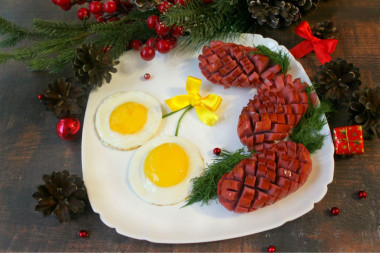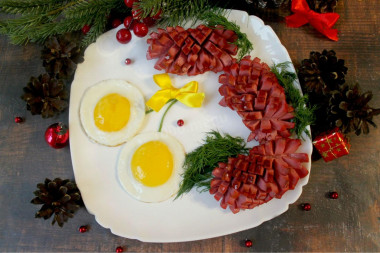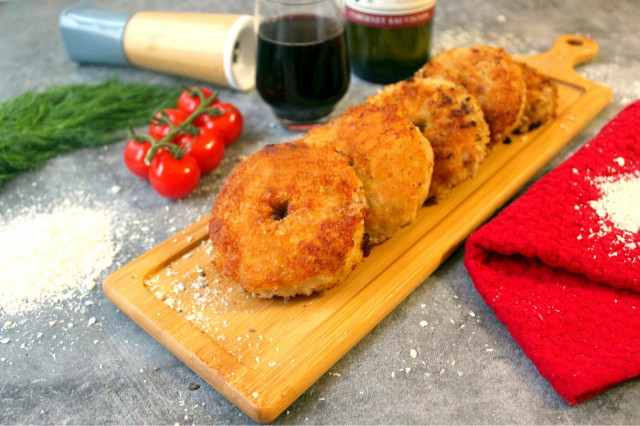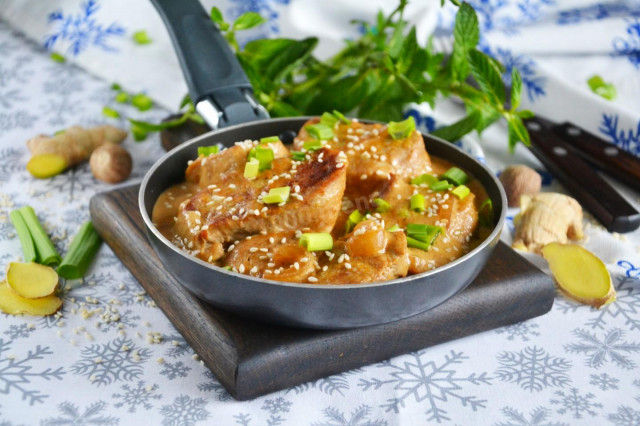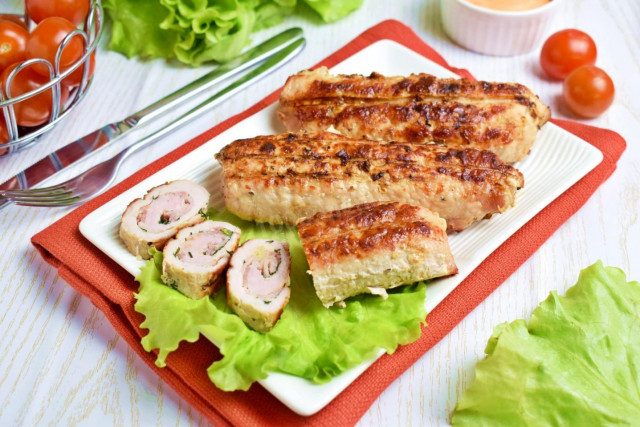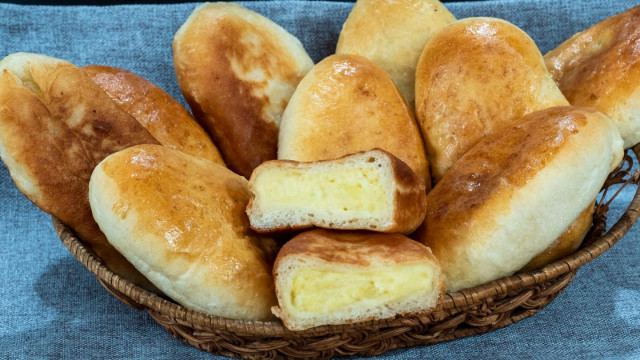Composition / ingredients
Step-by-step cooking
Step 1:

Prepare all the ingredients. Take good quality sausages, an egg of category C1 or C0, fresh dill, salt, butter and vegetable oil for frying. Instead of sausages, you can take sausages of a small size larger in diameter, suitable in shape for creating cones. Long thin Wiener-type sausages are not suitable for this recipe.
Step 2:
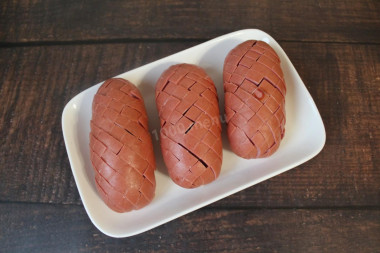
Take the sausages and use a sharp knife to make deep cuts diagonally first in one direction and then in the other. You should get a drawing in the form of small squares-rhombuses. At the same time, it is impossible to make incisions until the end, otherwise the scales of the cones will simply have nothing to hold on to.
Step 3:

Heat the vegetable oil in a frying pan, put the prepared sausages and fry them on all sides over medium heat until golden brown. During cooking, the scales will open and cones will form. Vegetable oil can be replaced with butter, but then it is better to use melted butter, it is better suited for frying. Or you can fry the sausages on a mixture of vegetable and butter, then the oil will not burn when frying.
Step 4:
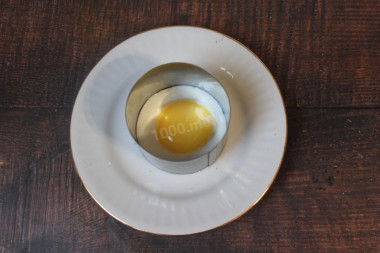
Put a piece of butter in a clean frying pan, melt it, place a pastry ring (diameter 7.6 cm) in the center, greased with vegetable oil, and drive a chicken egg inside the ring. Fry the glaze at a slightly higher average temperature until cooked, so that the protein grabs. At the end of cooking, add salt to the glaze. Do not salt the glaze beforehand, because then white spots may appear on the yolk, and the protein will become tougher.
Step 5:

Carefully remove the pastry ring, and transfer the cooked glaze to a plate with a spatula. Prepare the second glaze in the same way and also put it on a plate. Lay out the cones from the sausages next to it and decorate the dish with fresh dill. Serve the New Year's breakfast to the table with bread and a cup of delicious cappuccino.
Be sure to wash the eggs before use, as even the seemingly clean shell may contain harmful bacteria. It is best to use food detergents and a brush.
How do I know if an egg is fresh? Break it into a separate container. First of all, there should be no unpleasant smell. The protein of fresh eggs will be transparent and clean. The yolk should not spread and will be shiny, convex, homogeneous.
Use oil with a high smoking temperature for frying! Any oils are useful only until a certain temperature is reached - the point of smoking, at which the oil begins to burn and toxic substances, including carcinogens, are formed in it.
Unrefined oils, with rare exceptions, have a low smoking point. There are a lot of unfiltered organic particles in them, which quickly begin to burn.
Refined oils are more resistant to heating, and their smoking point is higher. If you are going to cook food in the oven, on a frying pan or grill, make sure that you use oil with a high smoking point. The most common of the oils with a high smoking point: refined varieties of sunflower, olive and grape.
Caloric content of the products possible in the composition of the dish
- Chicken egg - 157 kcal/100g
- Egg white - 45 kcal/100g
- Egg powder - 542 kcal/100g
- Egg yolk - 352 kcal/100g
- Ostrich egg - 118 kcal/100g
- Dill greens - 38 kcal/100g
- Butter 82% - 734 kcal/100g
- Amateur unsalted butter - 709 kcal/100g
- Unsalted peasant butter - 661 kcal/100g
- Peasant salted butter - 652 kcal/100g
- Melted butter - 869 kcal/100g
- Vegetable oil - 873 kcal/100g
- Salt - 0 kcal/100g
- Pork sausages - 332 kcal/100g
- Beef sausages - 215 kcal/100g


